Friday inspiration: Letters Are My Friends
Is this the world's first-ever concept store for typography?
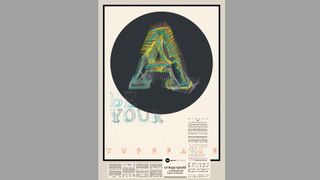
Introducing Letters Are My Friends: Berlin's first-ever concept store for typography and, dare we suggest it, a world first?
Part showroom, part research and innovation lab, part design studio, Letters Are My Friends sits at the intersection of typography and new technology.
The aim, says co-founder Bärbel Bold, is to provide a real-time playground for typography – "like a record store" – where people can experiment and interact with different concepts. The combination of type and tech is crucial.
We caught up with Bold during OFFF 2016 to find out more…
Why launch a concept store for typography?
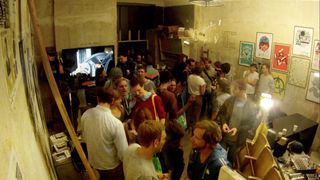
There are many galleries in Berlin for all kinds of stuff, but very few of them care about edgy and innovative concepts where new technology is involved. Berlin is a city full of typographers, design tourists, creative coders and great designers, so for us it was obvious.
We wanted to create a physical space for type and tech, where you can experience, explore and grab, and see what happens in this field – a modulating, ever-changing typographic concept store.
Why do you want to create real-world type experiences with makers and designers?
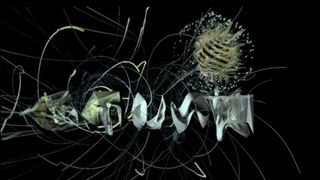
We were bored just sitting in front of our computers, so it was time to get physical again. We wanted to have our own real-time playground where we could concept interactions, and interact with concepts.
Get the Creative Bloq Newsletter
Daily design news, reviews, how-tos and more, as picked by the editors.
Even if it's not hyped or finished… Prototypes are worth being shown. That's why it's not really a pure shop yet, in the traditional sense - rather it's a concept store with a lab base. It means our showroom is constantly changing and evolving.
What do you hope to achieve?
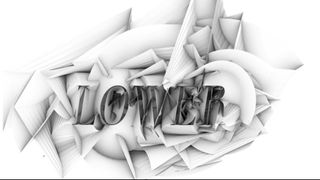
When people understand that type and tech work together, it allows new opportunities for creativity to happen. It's not about creating the perfect 'A' and 'B', but about a balanced dialogue in between.
We believe that language, letters and typography are the basic building blocks in any field of design. It doesn't matter what kind. It's the base for communication and in this way holds people together.
We have a fertile ground for interactions and trying out new ideas. It doesn't matter if they work. The important thing is that we keep evolving. We've just started successfully creating corporate pop-up-stores and retail concepts for clients in our showroom.
Which one project best represents Letters Are My Friends?
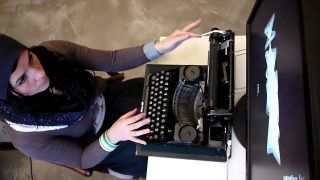
The Infinite Typetrooper is a 1930's typewriter that triggers animated type on a display. People always want to play with it like an instrument.
It combines old printing technology with generated typefaces, within a haptic experience of an interactive installation. We like it because it's the end result of an iterative series of frameworks we developed to answer the question of what the most exciting part in an animation is (the transition).
Actually, The Infinite Typetrooper is an extract of the framework Buchstabengewitter, which we developed to generate an animated, ever morphing typeface, which is never static. We did the linear version, which is constantly floating from A to Z and starting all over again.
Aesthetically, it works like a two-component-concept: two geometric forms – one is inside, one is outside – are connected by lines. When the forms are rotating, for example, against each other, the lines rotate along. This simple rule-set defines a certain aesthetic, when the inner form is a static vector font base. There are infinite ways to set up the parameters!
That was fine, but we felt like we could do more with this parametric framework. So the second extract was the interactive installation version – single, touchable letters, always moving, that can be changed by the user.
What advice would you give for convincing clients to incorporate experimental type into their projects?
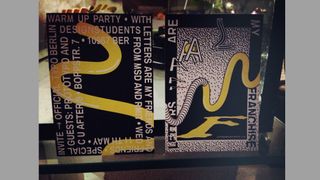
01. Communication is key
For us, there is no difference between selling experimental type projects and selling any other project. What matters is a strong concept and how you package it within a relative context. Selling and acquisition are two fields of their own. They function via pure communication, if you're willing to build up a real partnership.
02. Build up a reputation
When you're able to build a relationship, gain trust and interest not only for your own world, then you are talking! I would say, the trick is finding the same level of openness within the pipeline through honest conversation.
03. Know what you're offering
Also a good self-assessment helps. Be who you are and don't have fear about representing and arguing for what you want. Always reflect on what you are doing.
What's the latest project you've worked on?
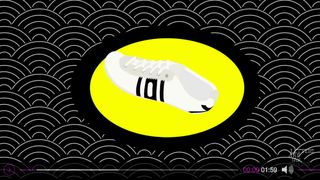
We developed an exciting interactive installation for Onitsuka Tiger within the Fashion Week scenography at the beginning of this year – The History of the Tiger Stripes. A stopwatch controller triggered different layers of a video showing the colourful 3D animated world of a running shoe.
The audience could affect each layer and change timings by using a VJ-tool, and experience the story in their own way.
What are the biggest lessons you've learned since launching the store?
01. New possibilities bring up new limitations and new problems
Different people in different design disciplines have different working methods, and it takes a lot of time to build up a common, calibrated language for this matrix, and conquer trust. Being interdisciplinary is a family affair, rather than a membership club. But unfortunately relationships don't work with everyone...
02. Self-evaluation is important
Good design is not only about creativity, but also about entrepreneurship. Get in touch with the numbers.
What's the main message you want people to leave your OFFF talk with?
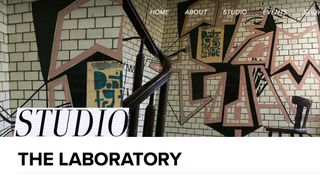
Before seeing potential in design, see potential in people's personalities, including your own. Get to know your guts... and kern your egos! To find ways to interact honestly means value.

Thank you for reading 5 articles this month* Join now for unlimited access
Enjoy your first month for just £1 / $1 / €1
*Read 5 free articles per month without a subscription

Join now for unlimited access
Try first month for just £1 / $1 / €1

Julia is editor-in-chief, retail at Future Ltd, where she works in e-commerce across a number of consumer lifestyle brands. A former editor of design website Creative Bloq, she’s also worked on a variety of print titles, and was part of the team that launched consumer tech website TechRadar. She's been writing about art, design and technology for over 15 years.